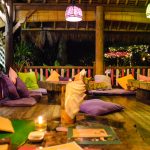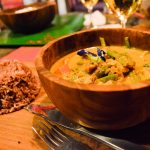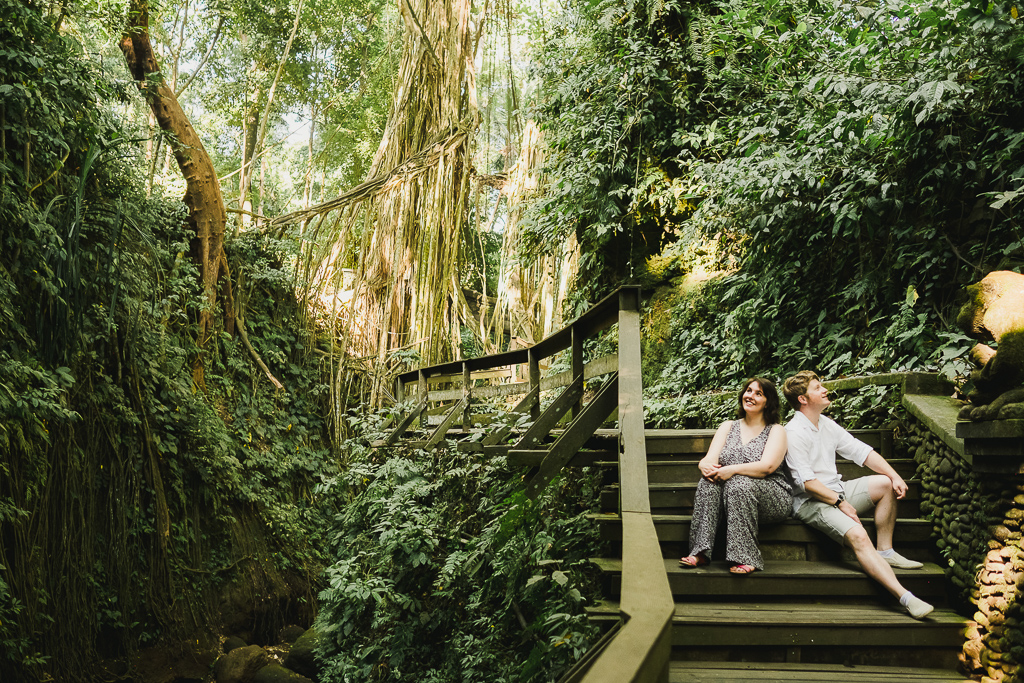 As part of our honeymoon, we spent seven nights in Ubud, Bali’s self-confessed cultural capital. If you’ve watched Julia Roberts in Eat, Pray, Love – and her tale of self-discovery – it’s likely that you’d recognise quite a few areas in and around Ubud.
As part of our honeymoon, we spent seven nights in Ubud, Bali’s self-confessed cultural capital. If you’ve watched Julia Roberts in Eat, Pray, Love – and her tale of self-discovery – it’s likely that you’d recognise quite a few areas in and around Ubud.
The city has quite a hipster vibe with independent boutiques (like TN Parrot, a local menswear brand designed in Ubud, where Tom bought a whole new summer wardrobe, we needed to bring back another suitcase – no jokes) and local artisan shops. Since Eat, Pray, Love it’s also discovered a market for yoga retreats and vegan diets.
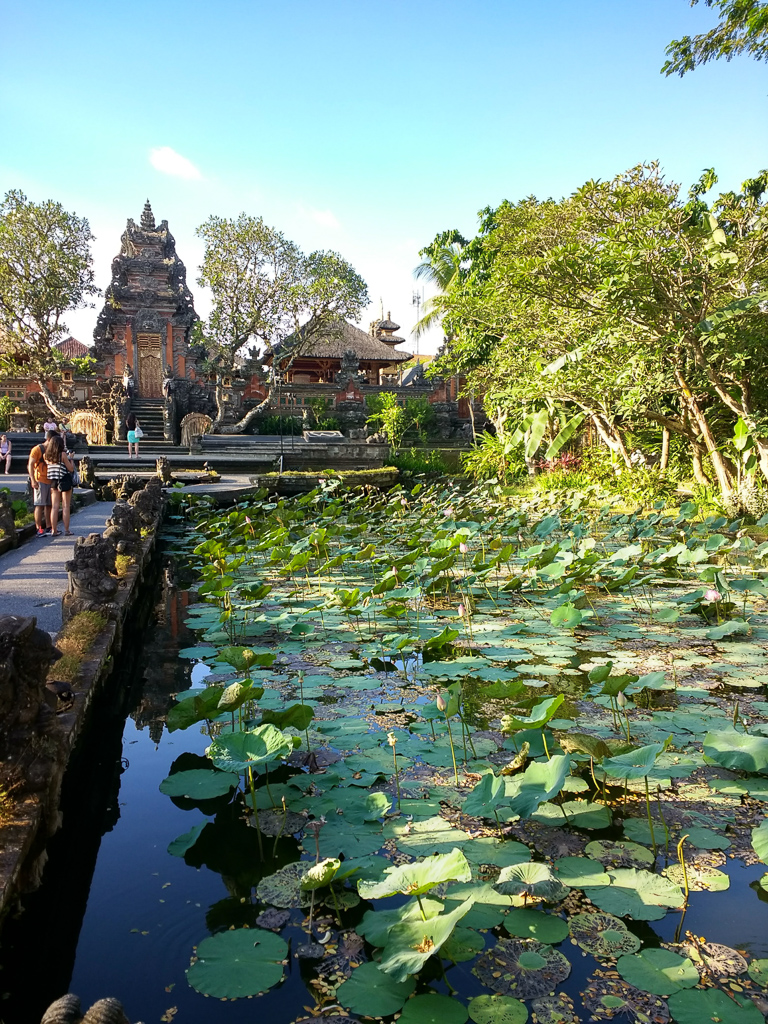
A spot of history…
This is important as so much of Ubud’s daily life is affected by its history. In the 19th century, Corkorda Gede Agung Sukawati established a brand of the Sukawati royal family and began an age of alliances and disputes with neighbouring kingdoms. In 1900, the Kingdom of Gianyar, including Ubud, became, at its own request, a Dutch protectorate, enabling religious and cultural life to flourish.
Corkorda’s descendants encouraged Western artists to visit and settle in the area across the 1930s, including notably Walter Spies and Rudolf Bonnet. The new art scene hugely influenced local art introducing different ideas and techniques and likewise, Balinese culture was popularised in artworks sent back west. Expats and tourists have flocked ever since – mainly for the arts.
Where we stayed in Ubud.
We stayed in two places during our week there, the Swasti Eco Cottages and Payogan Villas.
Swasti Eco Cottages (three out seven nights in Ubud)
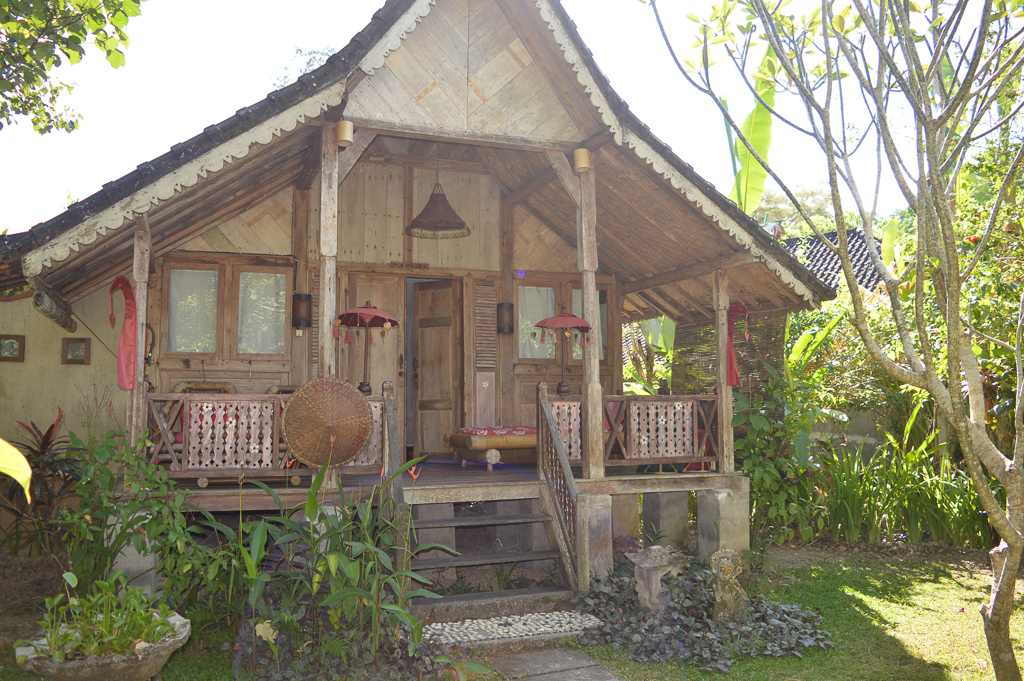
By far our favourite was the Swasti Eco Cottages, it’s noted in the Lonely Planet that its ‘green cred out-Ubud’s Ubud’. On our first night, it was a bit of a culture shock, as we’d come from the Marina Bay Sands Hotel in Singapore. We stayed in one of their vintage traditional houses, which the owners had rescued from all over Indonesia.

Each cottage comes with a large water fountain so that you can refill your bottle and a canvas tote to encourage you to avoid plastic bags. The compound includes a large organic garden where the produce is used in the onsite restaurant which serves breakfast, lunch and dinner and was some of the best food we ate.
You can also sign up for yoga classes or for a pampering session in its spa (which of course we did, more than once, Tom particularly enjoyed his pedicure!) It also had a saltwater swimming pool, which was very welcomed after a hot day schlepping around Ubud.

Each morning, breakfast is served buffet style with lots of fresh fruit, vegetables and chia pots and a morning smoothie. Eco Swasti is about a thirty-minute walk to the centre of Ubud but it is very close to the Monkey Forest. (I’ll come onto that in a minute.)
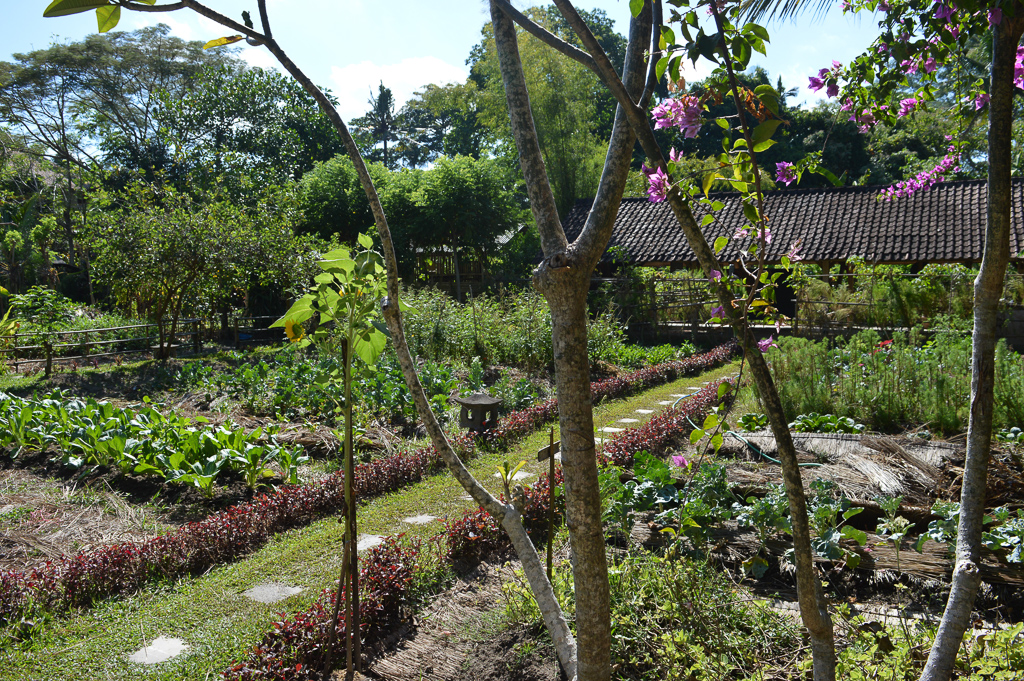
Payogan Villas (five out seven nights in Ubud)
Unfortunately, we were only due to stay at Eco Swasti for three days, after that, we moved to Payogan Villas, which was a 20-minute taxi ride out of the centre. Catching a taxi is straightforward process once you’ve worked out the process – unlike at home they don’t really do taxi ranks, instead drivers stand around on street corners and outside tourist attractions holding signs saying ‘Taxi’.
Once you’ve established that they know where you need to go and fare settled, they pootle off to retrieve their car and you hop in the back. They will definitely try to win business from you for the next few days with offers of tours to various sites – this is helpful in the first few days, but eventually, we ended up saying it was our last day for about a week.
Ok back to Payogan, this was a very large resort which I picked because it had this swimming pool:

A swimming pool in the jungle. It did not disappoint on that front.
But when we arrived on a Tuesday night, there really was nobody else there, it was a bit disconcerting. If you do stay here, breakfast is perfectly pleasant, but don’t eat dinner – it was the worse meal we ate in three weeks. Also, the place seemed to be run by 16-year-olds who were all on their summer placements and my goodness, they were keen to chat! They were, of course, incredibly polite and helpful. Eventually, a larger party of Chinese guests joined us and the hotel filled out a bit more.
Also, the approach to the hotel is incredibly bumpy, it’s like someone spent all this effort to build the resort and then ran out of funds for the road leading up to it. We had a lovely room with a HUGE bed, but it did take me a while to get used to the outdoor bathroom. Literally, loo outside.
What we did! – The Monkey Forest
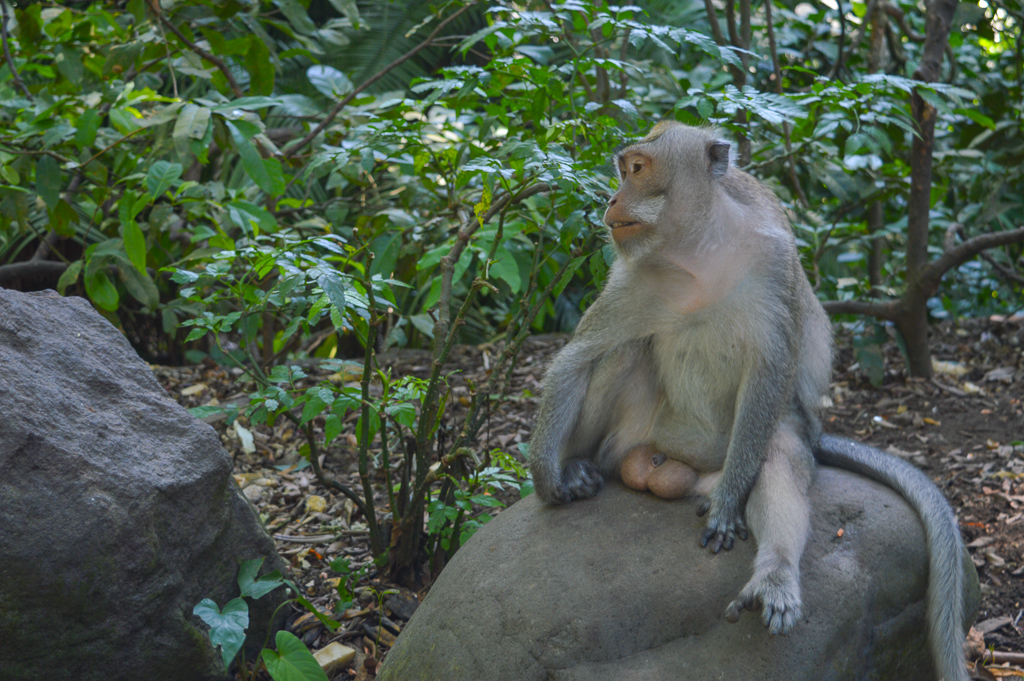
We visited the Sacred Monkey Forest twice, we stayed just 10 minutes away from it at Swasti Eco Cottages. Its official name is Mandala Wisata Wanara Wana and houses three holy temples, including the Pura Dalem Agung Padangtegal, also known as the Great Temple of Death. This Hindu temple, built around 1350, is dedicated to the god Hyang Widhi, the personification of Shiva, the transformer.
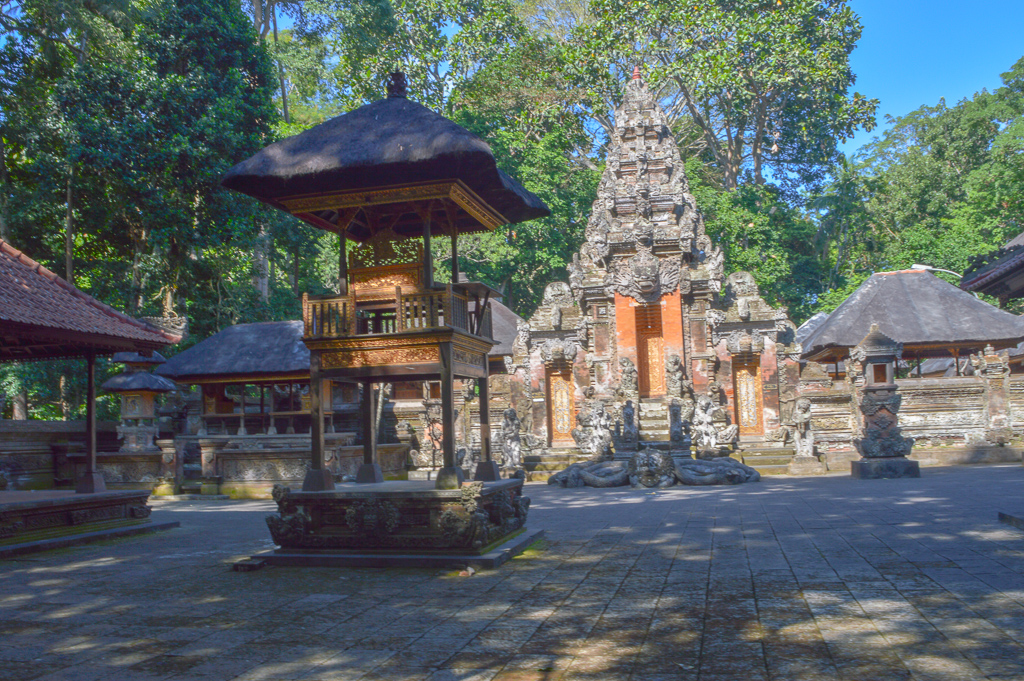
As you’d imagine by its name its inhabited by 600 grey haired macaques who are innocent looking, but not innocent in behaviour. Despite adhering to the MANY warning signs, I was harassed by a monkey. And Tom did nothing to save me, although he did save my hairbrush which this cheeky monkey was tempting to make off with.
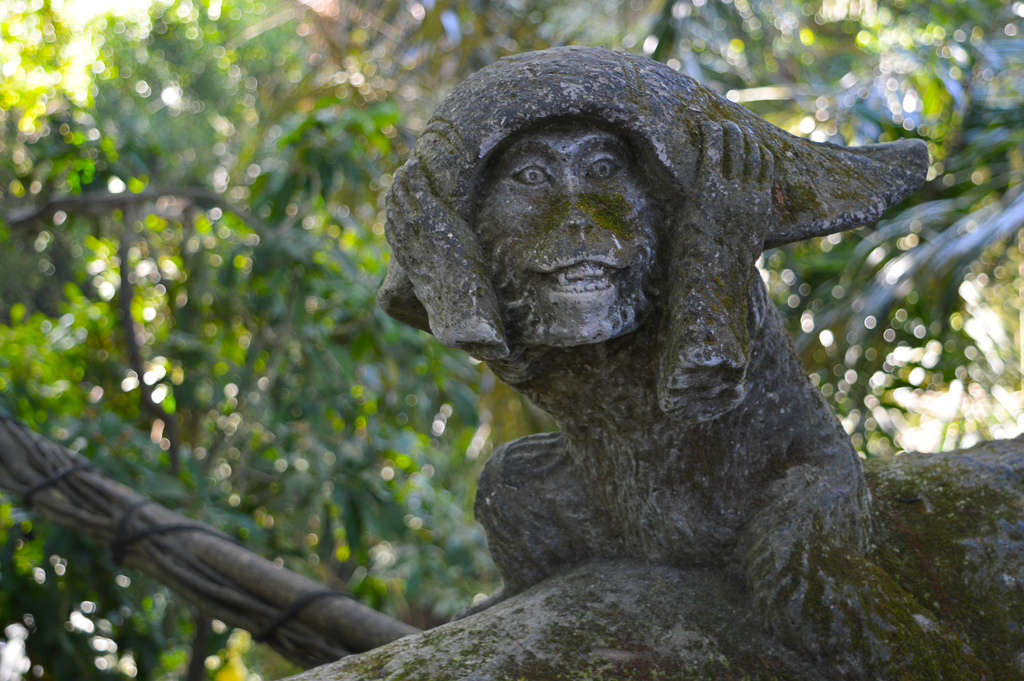
Our second visit was much more uneventful and we met up with local flytographer who took our picture! We followed up our morning trip with breakfast in Habitat Cafe, where Tom had one of those breakfast smoothie bowls which seem to be all the rage and a kombucha tea (who’s saying Tom didn’t enter into the spirit of Ubud!) I opted for deep-fried poached eggs.
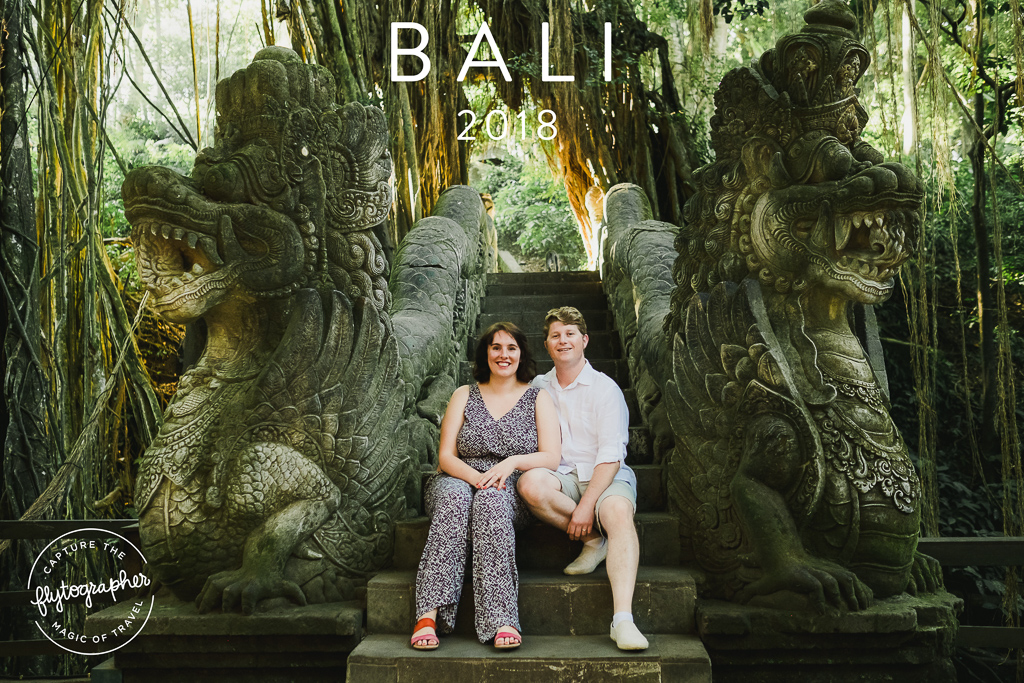
Bali Nature Herbal Walk, through Ubud’s rice fields
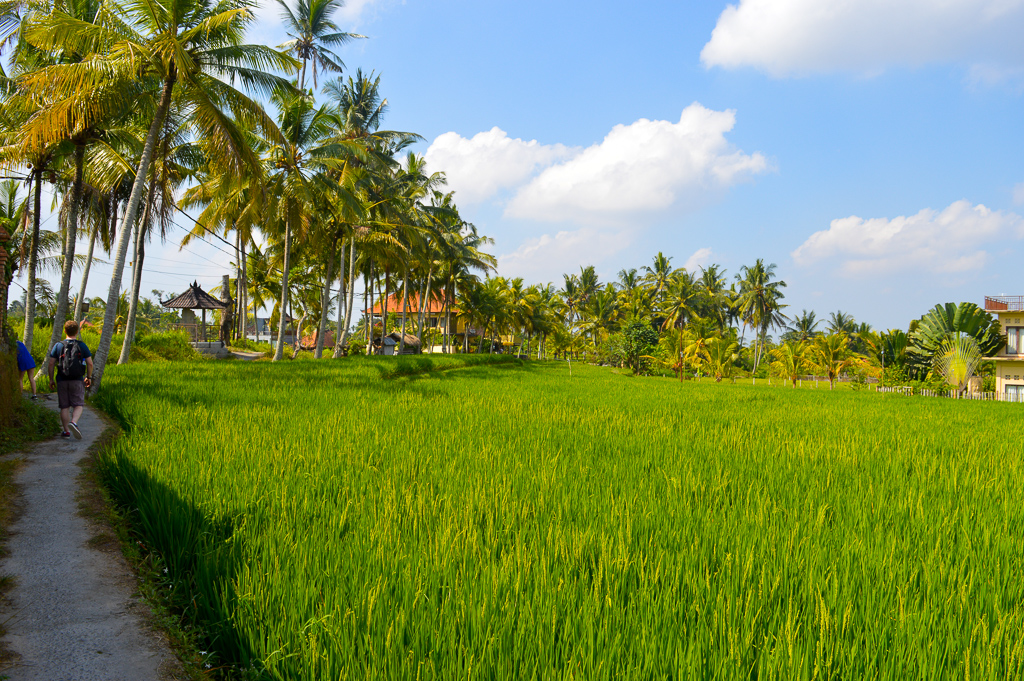
I spent ages trying to decide the best way to see Ubud’s famous rice fields. I didn’t just want to see them from a viewing point, which I suspect a lot of the touristy tours do, I wanted to walk through them and know what I was looking at.
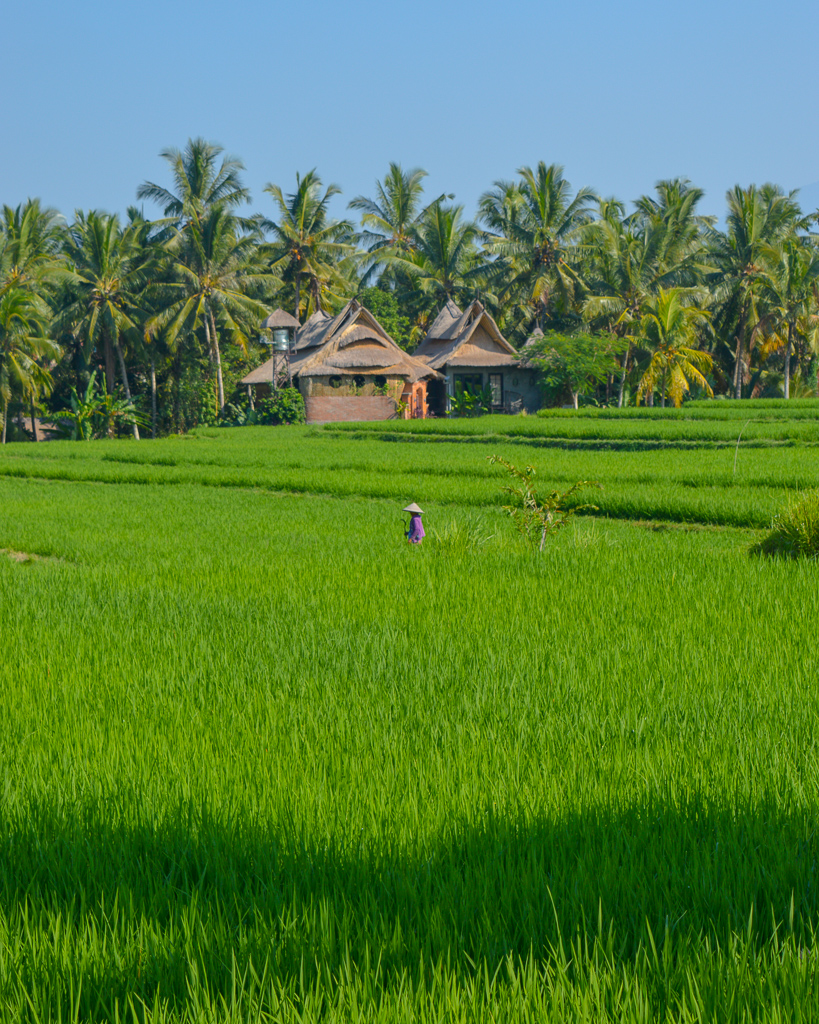
We opted to join Bali Nature Herbal Walk, an easy three-hour walk through the nearest rice fields which are literally just tucked behind Ubud’s main streets. It is possible to do this walk on your own, but without the tour guide, I’m not sure we’d ever find the start of the walk!
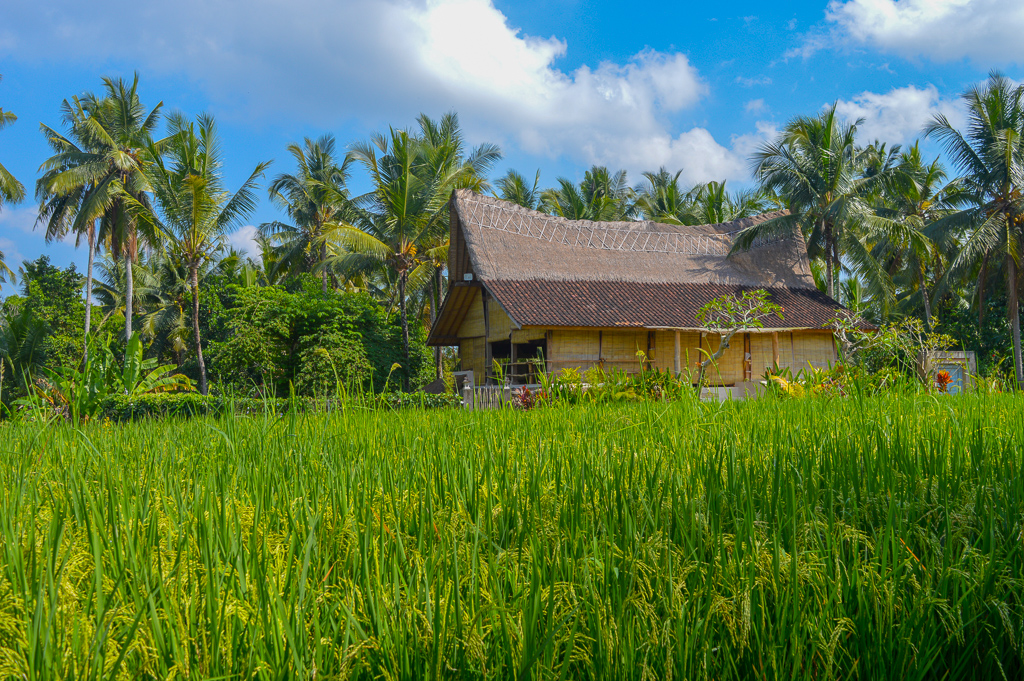
Our guide explained the different types of rice we could see, plus coffee, lemongrass and other herbs growing in the wild. We stopped halfway for a fresh coconut, they were delicious. You can find all the details about Bali Nature Herbal Walk here.
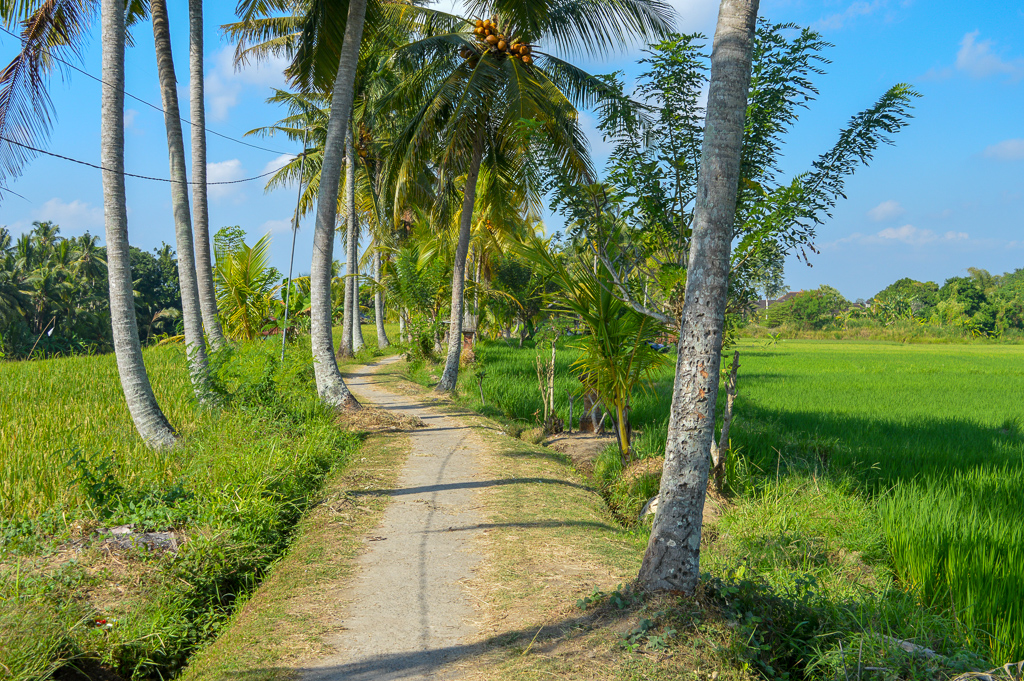
Museum Puri Lakisan
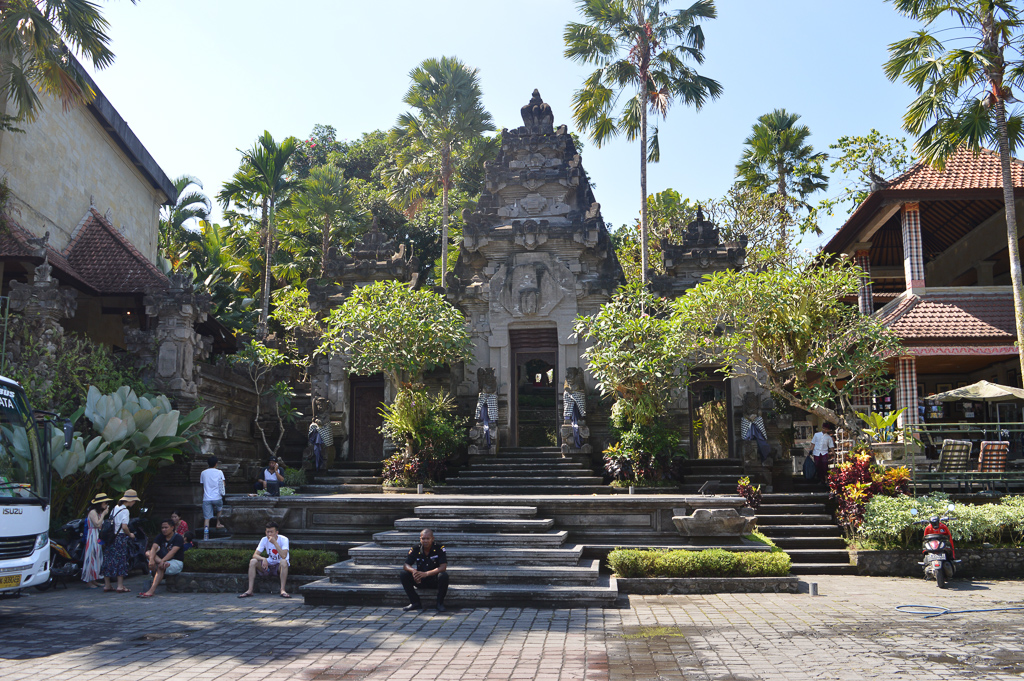
The Museum Puri Lakisan was built to the designs of Rudolf Bonnet, a Dutch artist, who lives much of his life in Ubud.
When he arrived in Bali in 1929, he was invited by Cokorda Gede Raka Sukawati, a prince of Ubud’s royal family to live in Ubud. Alongside Cokorda and Walter Spies, a German artist, I Gusti Nyoman Lempad, Bali’s foremost stone sculptor and architect, Bonnet was a founder member of the Pita Maha movement which was instrumental in curating local Balinese art, selling it in galleries and including it in exhibitions that travelled worldwide.
During WWII, Bonnet was interred in a number of prisoner camps and despite the deteriorating relations between Netherlands and Republic of Indonesia, Rudolf remained in Ubud until the late 1950s, partially due to his close relations with President Sukarno, who had 14 of his paintings. The Museum Puri Lukisan began in 1954, just a few years before Bonnet was eventually expelled from the country after some artistic differences with the then president Soekarno. He finally returned in 1972 to help the expand the museum and organise an opening exhibition.
The Museum’s East building shows early works from Ubud’s surrounding villages and 16th-century cloth wayang-style paintings – a bit like shadow puppets, whilst the North building features works during the Pita Maha heyday. The West building includes artworks from post-war Bali and the South gallery houses special exhibitions, which when we visited included artworks by Lempad.
The four galleries, provide a great insight into Balinese art and are surrounded by lush gardens, the museum has a great little cafe too. Alternatively, there’s a branch of Gelato Secrets a few doors down offering an exciting selection of unusual ice cream flavours.
Ubud Water Palace
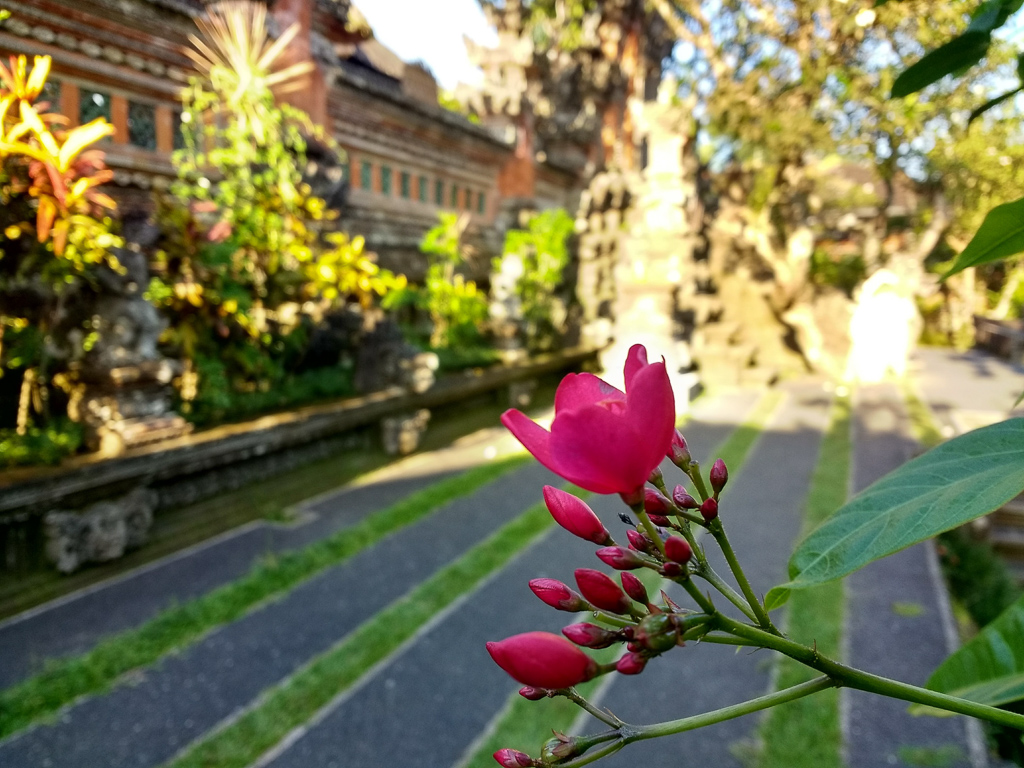
It seems that ‘palace’ is used as a synonym for ‘temple’. Ubud’s water palace or Pura Tama Sarawasti, is in fact a temple dedicated to the goddess Sarasvasti, the Hindu deity of learning, literature and art and was designed by Lempad and commissioned by Cokorda (it’s a small Ubud art scene!). Plumeria trees decorate the edges of the huge lily pond which sits in front of the entrance gate, known as kori agung, to the temple complex within – understandably, only locals in a traditional dress can enter the holy sanctum.

Balinese dancing at Ubud palace
The palace and temple complex is an impressive backdrop to one of the weekly Balinese dancing performances. There were many different performances and we eventually plumped for one at the Ubud Palace, which seemed to be the main venue. We got an insiders tip that if you wanted a seat make sure you were at least 45 – 50 minutes early and I was pleased we followed the advice – front row seats no less!
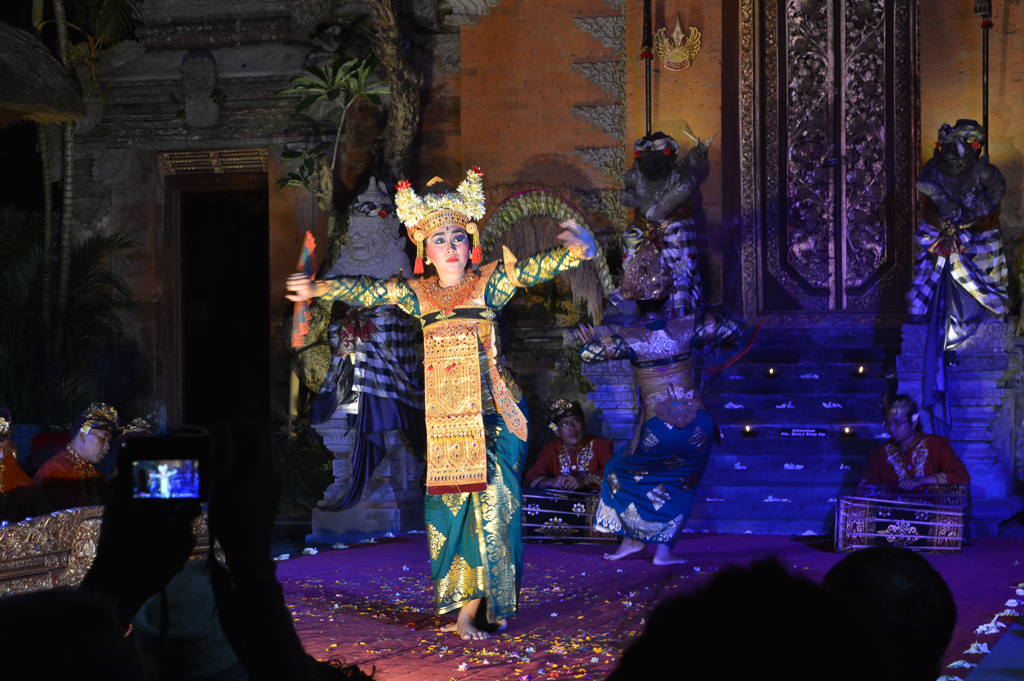
We were given a leaflet at beginning of the performance describing the story behind each routine and there are plenty of entrepreneurial sellers with Bintangs should you not make it through the 90-minute performance. The Ubud Palace’s official name is Puri Saren Agung and was mostly built after 1917 earthquake and many of its carvings were done by Lempad.
We watched the Legong performance, which is a style of dance with intricate finger movements, complicated footwork and expressive gestures, all to traditional gamelan music. Even writing this now, I still attempting to do the flittery hand move. Apparently, it’s believed that a Sukawati prince fell ill and dreamed of two young maidens dancing and when he recovered organised such performances.
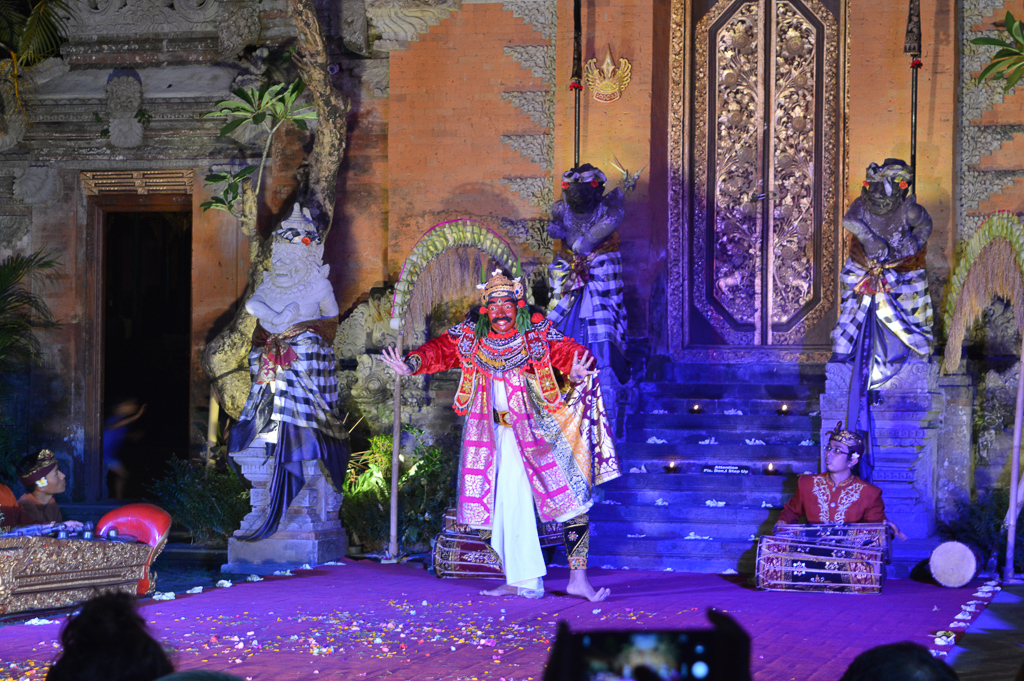
Our eating highlights 🙂
No diary of our trip to Ubud would be complete without some culinary highlights.
Hujan Locale
We really didn’t have a bad meal when we were in Ubud, but this was a really great dinner and was our final night in Ubud before we headed to Lombok the following morning. Hujan Locale is part of the wider Sarong group and is set in a colonial style bungalow which as the Lonely Planet says ‘is made for balmy evenings’. It’s all very Ubud – sustainably grown produce, home-smoked meats and locally sourced organic vegetables. We particularly like the Plaga Chardonnay, Bali’s local wine source.
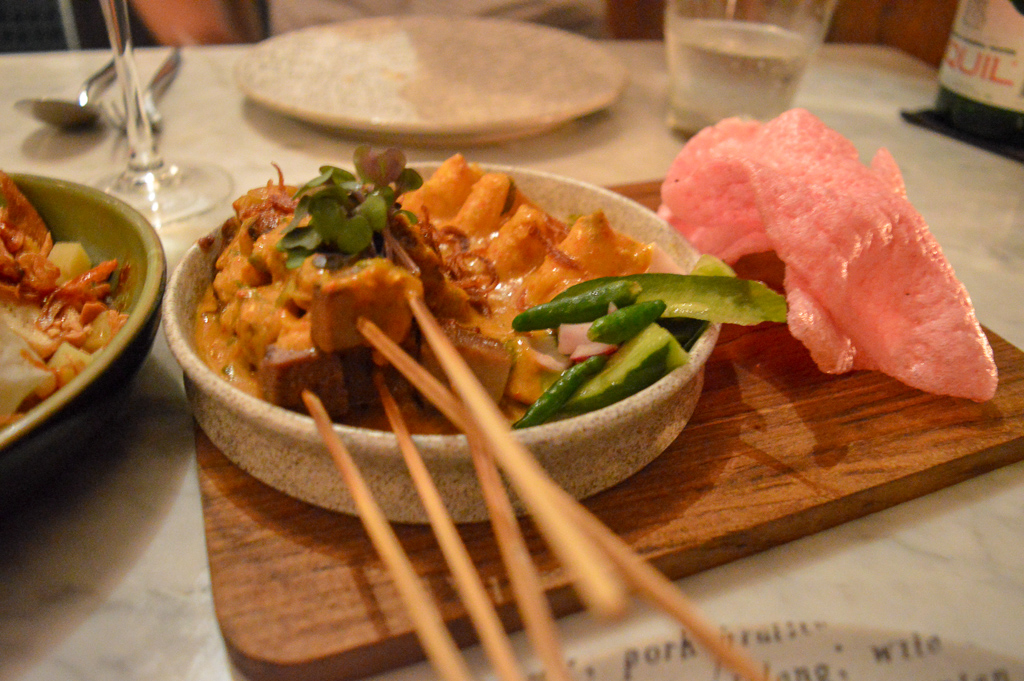
Melting Wok
After we spent the morning wandering the rice fields we firstly needed our sore feet tending to with a reflexology massage which was right above Melting Wok Warung. It made a perfect lunch stop. Tom had a spicy fish dish on a chilli sambal. I also discovered a new love for tempeh, a type of nutty tofu, in a fresh Indonesian curry sauce. Four months later, I’m salivating at the thought.
Arang sate bar
This is directly opposite Ubud’s Palace and offers a vast range of satay choices. It had a hustle-bustle kind of vibe in the evening without feeling rammed or too close to the busy main road. We had the tuna satay and crispy duck, a Bali classic, amongst other dishes.
Well done that was an epic blog post, after this, we headed to Lombok in caring hands of Kadek (check out Kadek if you’re looking for a driver).

